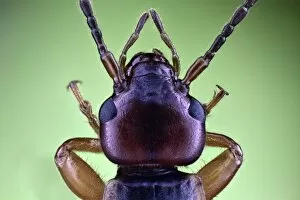Earwig Collection
The Male St Helena giant earwig stands tall among its insect counterparts, like the mantis, leaf insect, and stick insect
All Professionally Made to Order for Quick Shipping
The Male St Helena giant earwig stands tall among its insect counterparts, like the mantis, leaf insect, and stick insect. Its unique appearance is reminiscent of creatures from another world. Just like the Common flying dragon and two-horned chameleon, it possesses an extraordinary ability to blend seamlessly into its surroundings. In a picturesque scene featuring beech marten, earwig, and ferns, nature's beauty unfolds before our eyes. The Curtis British Entomology Plate 560 captures the intricate details of these fascinating creatures in all their glory. A vibrant chromolitho showcases a strawberry harvest in Vierlanden, Hamburg, Germany. Amidst this fruitful bounty lies an unsuspecting earwig - a tiny visitor amidst the luscious red berries. An ancient woodblock print from 1788 depicts an intriguing encounter between an earwig and mole-cricket. These two insects engage in a delicate dance within their natural habitat. Among dry foliage hides the elusive earwig - camouflaged perfectly to evade detection. This master of disguise thrives in its chosen environment with ease. A mesmerizing color lithograph from c. 1860 unveils various insects in all their splendorous hues. Among them is Forficula auricularia - commonly known as the European or common earwig - showcasing its distinctive features that set it apart from others. Delving deeper into this remarkable creature's anatomy reveals a cross-section illustration within the auditory canal of an ear. With antennae gently touching the tympanic membrane, we witness how intricately connected nature truly is. Lastly, forficula gigantea takes center stage as we explore yet another species of earwigs that captivate our imagination with their sheer size and presence. From hidden habitats to astonishing encounters captured through artistry and scientific illustrations alike; these glimpses into the world of earwigs leave us marveling at nature's boundless wonders.








































